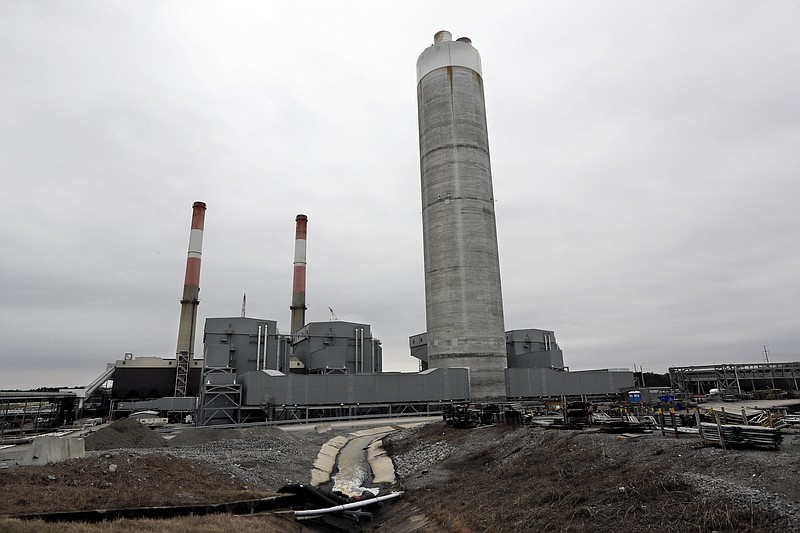We're evaluating our options, but I think it is very likely that we will appeal.
KNOXVILLE - The Tennessee Valley Authority "is very likely" to appeal a federal court order that the utility dig up and remove coal ash stored for decades at its Gallatin coal plant in Middle Tennessee, TVA President Bill Johnson said Thursday.
Johnson said removing the coal ash will be 10 times more expensive than the current plan to spend about $200 million to cap and store the coal ash where it is now buried. The $2 billion remedy ordered by the court - and the potential for the ruling to set a precedent for other coal ash ponds across the country - is expected to lead to a TVA challenge to the court ruling in Nashville.
"We're evaluating our options, but I think it is very likely that we will appeal," Johnson told reporters following a board meeting here today. "This is a case of widespread interest in the industry. These cases are going on around the country and courts are reaching different conclusions so there is a little conflict in the decision at this point."
In a 123-page decision, U.S. District Court Judge Waverly Crenshaw, Jr., ruled earlier this month that the coal ash ponds at the Gallatin plant had been leaking potentially toxic substances into the groundwater and the Cumberland River and that TVA should dig up the coal ash and remove it to a landfill away from the plant. Crenshaw said the testimony in the case "conclusively establishes that coal ash constituents have historically been discharged into the Cumberland River" from the TVA coal ash ponds.
Since April 1970, TVA has been sluicing coal ash waste to a 476-acre coal ash pond complex, which is also unlined.
TVA argued that removing the coal ash is unnecessary and too expensive.
On Thursday, Lloyd Webb, director of energy procurement for Olin Chlor Akali in Cleveland, Tenn., and chairman of the Tennessee Valley Industrial Committee, urged TVA to appeal Crenshaw's decision because he said it could set a costly precedent for the cleanup of industrial and utility coal ash ponds across the country. The multi-billion expense of removing coal ash from existing ponds, rather than capping and keeping them in place, also could push up power costs without necessarily improving water quality, Webb said.
But Dr. Chris Groves, a professor of hydrogeology at Western Kentucky University, said in the court case that he considered the Gallatin Plant coal ash disposal sites "unsuitable for the containment of coal ash." He said the ash pond cannot effectively contain coal ash waste since it was constructed on top of highly porous limestone with numerous existing sinkholes and an associated underground karst flow system. He said that allows the waste to migrate into groundwater and the Cumberland River.
"This is an absolute win for us and our clients and the people of Tennessee who deserve to have clean water," Beth Alexander, lead attorney for the Southern Environmental Law Center, said in a statement after the verdict was announced. "Like at Kingston, it was necessary to take TVA to court to force it to take responsibility for its coal ash pollution. TVA will be required to do the right thing again, this time at Gallatin."
Coal ash is produced primarily from the burning of coal in coal-fired power plants. Coal ash ponds at TVA's Kingston coal plant ruptured in December 2008 and caused 1.1 billion gallons of coal fly ash slurry to be released into nearby properties and the Clinch River. TVA estimates it could end up spending nearly $1 billion to clean up the Kingston coal ash and to make payments to land owners, workers and others who claim they were harmed from the disaster.
TVA, which has 30 days to respond to Crenshaw's ruling in the Gallatin plant case, argued there was no direct link between the ponds near the Gallatin plant and the Cumberland River.
"There was no indication of any harm to the environment," Johnson said. "There were some exceedances (above the allowable leaks and releases under the Clean Water Act), but the impact of those exceedances in the groundwater and surface water had very little impact."
In his ruling, however, Crenshaw questioned the decision to place the storage ponds above porous limestone, known as "karst."
"The consequences of that decision continue today, and it now falls on the court to address them," the ruling reads. "The way to do so is not to cover over those decades-old mistakes, but to pull them up by their roots. TVA, as the entity responsible for the ponds, must be the entity to do so."
Crenshaw said while TVA had made improvements to its ash ponds, "none of those repairs were of the sort that would have negated the fundamental features of the complex that make it so prone to leak."
The judge imposed no civil penalties against TVA, however.
Jonathan Levenshus, who heads the Beyond Clean Coal campaign in the Southeast for the Sierra Club, urged TVA to take appropriate actions to clean up its coal ash ponds and ignore EPA's proposal to relax some of the rules over coal plant discharges.
"We can all agree that TVA's job is protect people by making sure that the dumping of coal plant water pollution gets cleaned up," he said.
Contact Dave Flessner at dflessner@timesfreepress.com or at 423-757-6340.
